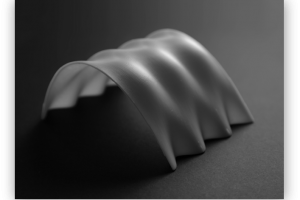
I am delighted to present our newest work on architectural shells and membranes at the Applied Mechanics Colloquium at Harvard University on December 4th.
By 2050, 70% of the world’s population will live in cities. Civil engineers envision, design and construct structures that those city dwellers depend on daily. The construction industry is one of most resource‐intensive sectors, and yet our urban infrastructure continues to be built in the massive tradition in which strength is pursued through material mass. In contrast, I have focused my research on structural systems that derive their performance from their curved shape, dictated by the flow of forces. As a result, these structures can be extremely thin, cost‐effective, and have a smaller carbon footprint. My core research question is ‘What is the relationship between form and efficiency in civil-scale structures?’ I will focus on the form finding and structural performance of rigid and compliant shells, and flexible net and rod networks with applications for a resilient urban environment. The applications include large-scale storm surge barriers, long-span buildings, adaptive building shading devices and submerged barriers. Some of these systems are inspired by structures that have evolved in biology, art or craft.